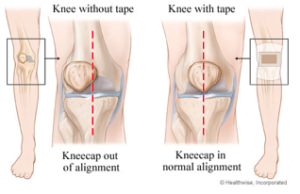How do I know if I have gluteal tendinopathy?
The pain associated with gluteal tendinopathy is usually centred over the greater trochanter, the large bone that you can feel at the side of the hip, but may extend down the outer thigh towards the knee.
Pain may be felt when walking, particularly at speed, uphill or upstairs and when standing on one leg to dress.
It is common to experience pain and a feeling of stiffness when rising from a chair after prolonged sitting. Night time is often worse, particularly when lying on your side.
Your physiotherapist will take note of your history and symptoms and perform a number of physical tests in order to diagnose gluteal tendinopathy and rule out other potential sources of pain.
Radiological investigations such as an ultrasound scan or MRI may be used to confirm the diagnosis.
Many people without pain have tendon changes on scans, therefore clinical testing is required to determine whether scan findings are relevant to your current condition. It is not necessary to have scans before presenting to your physiotherapist for assistance. Most people can be diagnosed with clinical tests.
What causes gluteal tendinopathy?
Researchers are still working on clearly determining the causes of tendinopathy.
It is currently thought that the pain of gluteal tendinopathy often appears when the tendons become overloaded. This may be due to rapid increases in training or exercise load, a large force associated with a slip or fall or an increase in bodyweight.
Sometimes there has been no particular incident but there may have been a gradual weakening of the tendons over time associated with lack of stimulus of the gluteals due to low activity levels, or certain postural and movement habits.
Those with gluteal tendinopathy have been shown to have weakness in the gluteal muscles that attach to the problem tendons. If the muscles and their tendons become weak enough, they will fail to cope with everyday loads and your nervous system may warn you about this in the form of pain.
How can physiotherapy help with gluteal tendinopathy?
Physiotherapy can help in multiple ways. Your physiotherapist can advise you about controlling aggravating tendon loads—everyday postures, movement habits and activities that might be provoking your pain. Your physiotherapist can help to address poor postural and movement habits, including gait retraining.
Research has found that exercise provides the best long-term outcomes for tendon pain.
A specific exercise program that aims to improve your movement patterns, gradually strengthen the muscles involved and improve the health of your hip tendons is essential. Massage, self trigger point releases, acupuncture, dry needling and heat may assist with short term symptomatic pain relief.
However, a specific exercise program and being taught how to control loads across your tendons are key strategies in managing this condition for the longer term.
Stretching of the gluteals or Iliotibial band (ITB), while a common strategy, will usually only aggravate the tendons. Corticosteroid injections have previously been recommended, but these have been found to have only short term benefits. Surgery is reserved for cases that have not responded to any conservative treatments.
How effective is physiotherapy for gluteal tendinopathy?
There is currently a lack of evidence available from clinical trials for any interventions specifically designed for people with gluteal tendinopathy. Given this limited information, physiotherapists use information from other tendinopathy research, which shows that addressing the underlying causes of the tendinopathy and known strength deficits is the best way to manage tendinopathy.
What can I do at home?
Avoid stretching and rubbing firmly over the bone and avoid activities that worsen your pain. It is important to remember that complete rest does not heal tendon problems and the more inactive you become, the weaker you become.
Visiting your physiotherapist as soon as possible will help you to get on track with a tailored education and exercise program.
It’s best to avoid crossing your legs and when standing keep your weight over both legs evenly. Hanging off one hip in standing tends to compress the gluteal tendons and make the pain worse.
How long until I feel better?
With specific advice and a tailored exercise program, most people will notice some reduction in pain within 2-4 weeks. However, it will usually take a commitment to an exercise program over a number of months to regain adequate improvements in strength and movement patterns to consistently control symptoms and regain normal activity levels.
The time frame can vary significantly depending on the severity of the tendon problem, duration of the problem, previous interventions, level of muscle weakness or physical conditioning, other coexisting health problems and adherence with advice and exercise prescription.
Book A Free 20 Minute Discovery Session:
Includes:
- full injury history and movement assessment
- accurate diagnosis
- detailed treatment plan
*Valid for new patients only. Only 3 available per week.




































